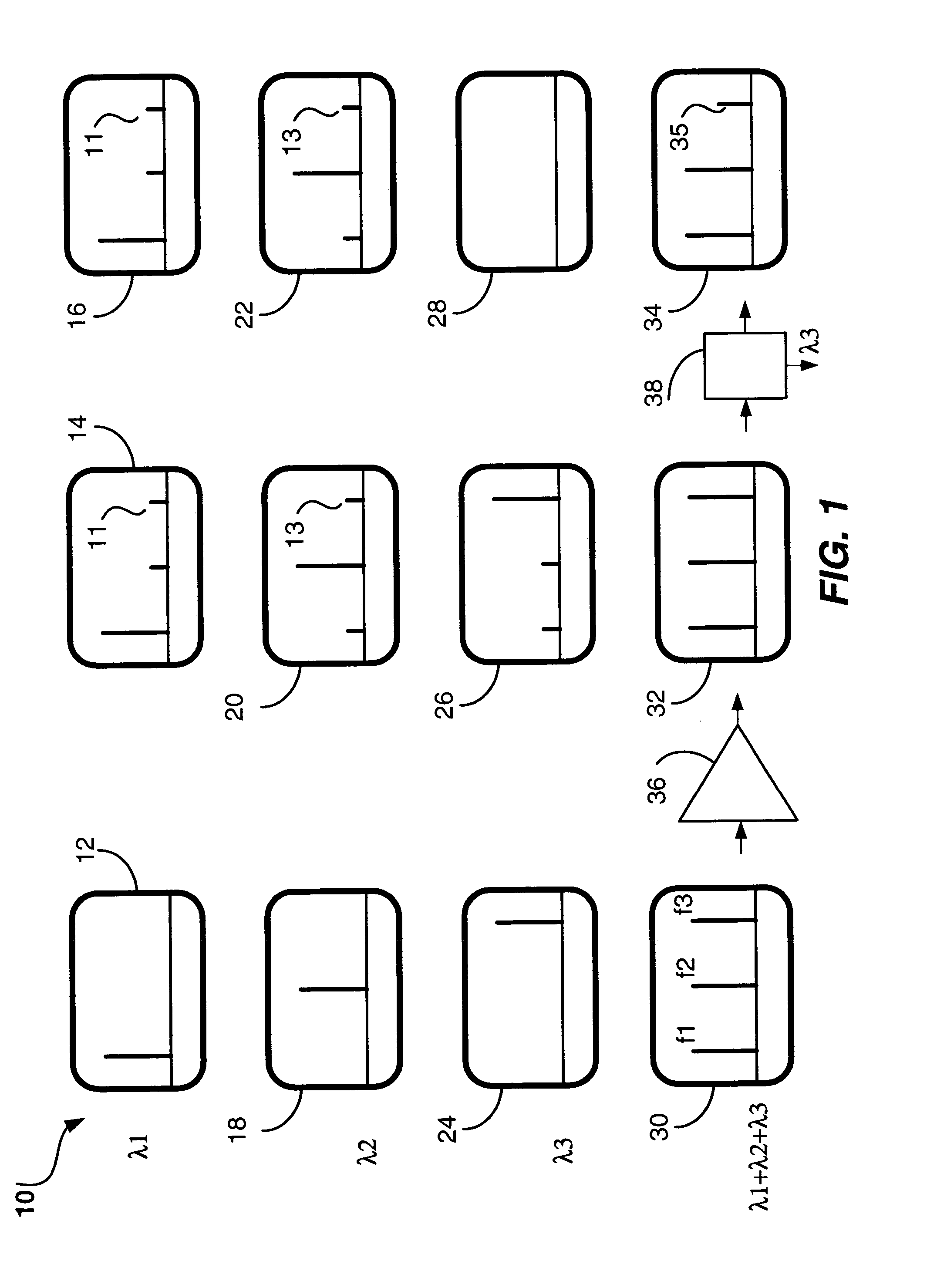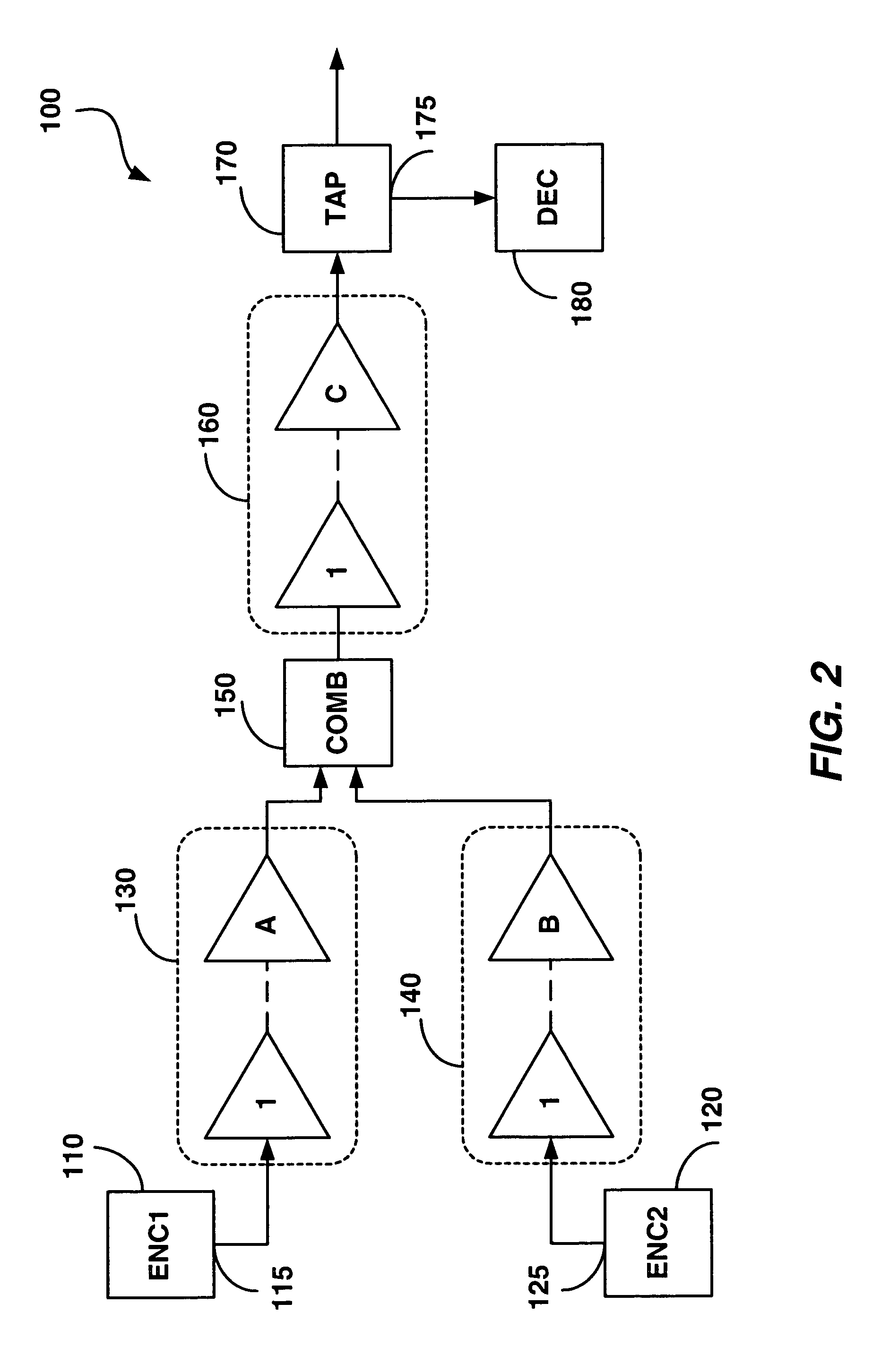Method and system for compensating for side effects of cross gain modulation in amplified optical networks
a technology of cross gain modulation and amplified optical networks, applied in the field of fiber optic networks, can solve the problems of compromising the accuracy of channel identification in optical networks, increasing the task of network management, and difficulty in identifying channels down stream of such amplification points in the network, so as to reduce the effect of obviating shortcomings
- Summary
- Abstract
- Description
- Claims
- Application Information
AI Technical Summary
Benefits of technology
Problems solved by technology
Method used
Image
Examples
first embodiment
[0064]The general formula used in computing the dynamic unexpected tone threshold “TU” is as follows:
[0065]TU=10·log(∑i=1ZVi·Ei)-OFFSET(1)
[0066]where i=1 to Z, Vi is the measured amplitude of the i-th valid tone,
[0067]Ei is the number of EDFA amplifiers in the path of the i-th valid tone, and
[0068]Z is the number of valid tones.
[0069]The value of OFFSET depends on the frequency range of the tones used in channel signatures, and on the characteristics of the EDFA amplifiers used. In the network of the preferred embodiment the value of OFFSET is 32 dB, based on a range of tone frequencies (“tonespace” in the US application to Obeda cited above) from about 48 kHz to about 64 kHz, and the XGM characteristics of amplifiers, e.g., from different manufacturers, or employing different control mechanisms.
second embodiment
[0070]In the second embodiment, the formula (1) is being adapted to become more efficient for computation of the unexpected tone threshold in such cases as the example network of FIG. 2, where there are a small number of groups of channels from multi-channel sources (ENC1 and ENC2), and where there are chains of amplifiers common to groups of channels.
[0071]The unexpected tone threshold of the decoder 180 of the network 100 in FIG. 2, using the preferred value for OFFSET, may be calculated as follows:
[0072]TU=10·log(∑i=1ZMVi·(A+C)+∑j=1ZNVj·(B+C))-32(2)
[0073]where i=1 to ZM, j=1 to ZN,
[0074]ZM is the number of valid tones corresponding to the channel signatures of the M wavelength channels from the encoder ENC1110; and
[0075]ZN=the number of valid tones corresponding to the channel signatures of the N wavelength channels from the encoder ENC2120.
[0076]The step 250 of determining the presence of unexpected channel signatures includes comparing all other remaining tone amplitudes...
PUM
 Login to View More
Login to View More Abstract
Description
Claims
Application Information
 Login to View More
Login to View More - R&D
- Intellectual Property
- Life Sciences
- Materials
- Tech Scout
- Unparalleled Data Quality
- Higher Quality Content
- 60% Fewer Hallucinations
Browse by: Latest US Patents, China's latest patents, Technical Efficacy Thesaurus, Application Domain, Technology Topic, Popular Technical Reports.
© 2025 PatSnap. All rights reserved.Legal|Privacy policy|Modern Slavery Act Transparency Statement|Sitemap|About US| Contact US: help@patsnap.com



